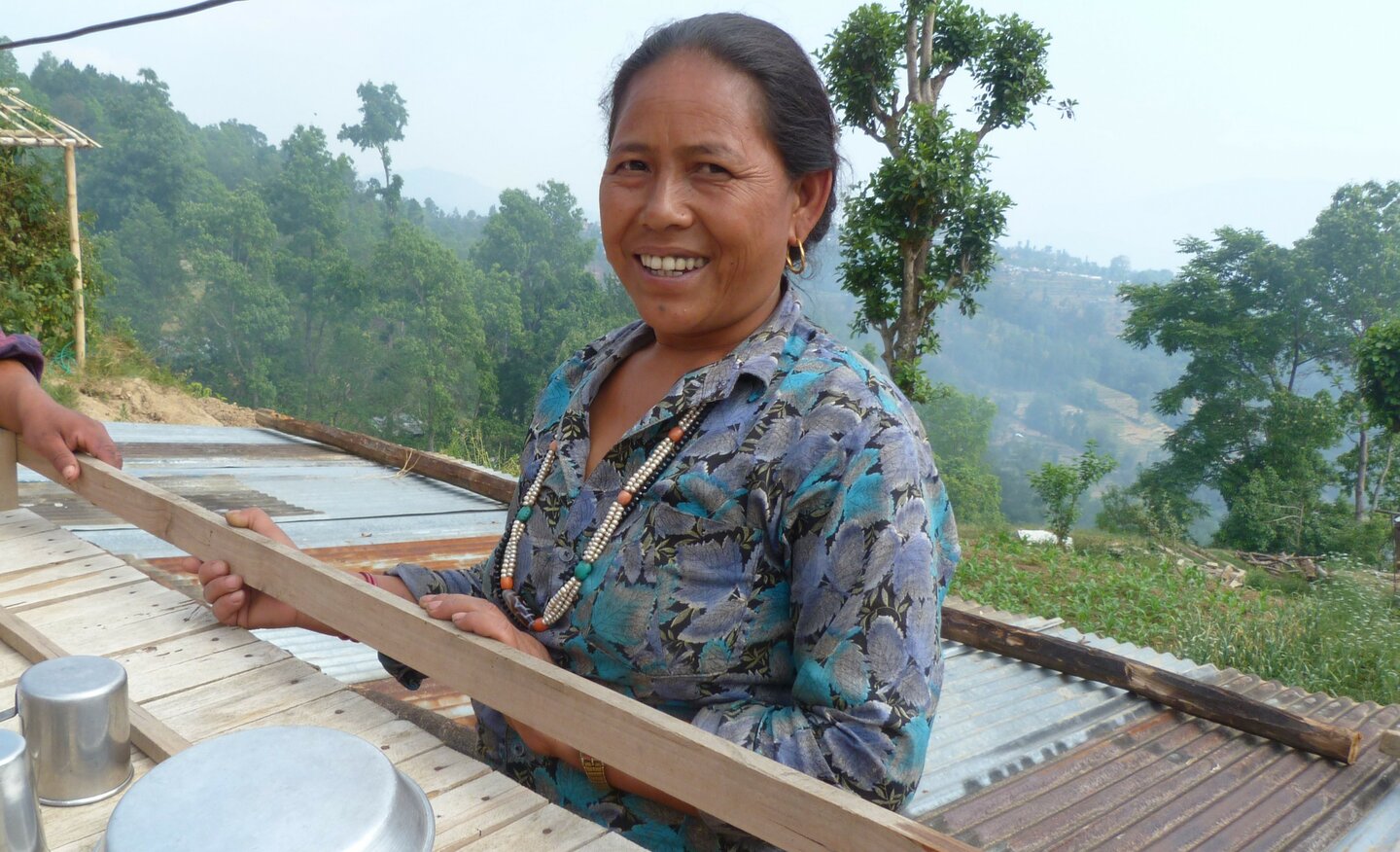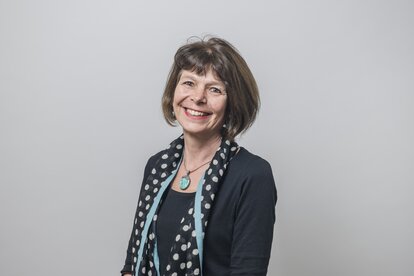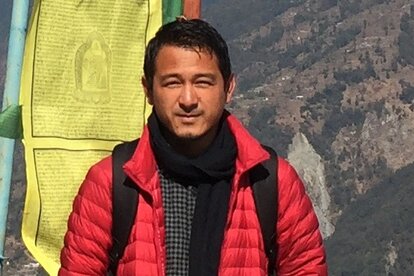The settlement of Palchowk of Melamchi municipality, ward 7, lies high above the main bazaar of Melamchi, on steeply sloping terrain only poorly accessible by dirt road. The people here belong to the Tamang ethnic community; most of them were rendered homeless by the earthquake of four years ago, and some are still rebuilding their homes. They were nevertheless fortunate in that there were no deaths in the hamlet.
Dried up springs
An earthquake not only destroys lives and physical infrastructure; it also alters subterranean water systems. At the time of the earthquake, there was a semi-functioning system of community taps fed by gravity flow. Community members explained that this was originally installed with assistance from another development agency over 30 years ago. It was partially destroyed when a road was cut through the settlement but was repaired by the members themselves. Following the earthquake, however, the taps dried up; the water source had moved.
“Building back better”
Funded through Swiss Solidarity, the support provided by Helvetas in partnership with Solidar Suisse aimed not just to restore the community’s water supply, but to improve upon the previous situation. The new system is sourced from a spring with a safe, sufficient and reliable all-year discharge. Each of the 43 households now has their own tap, as wider experience has shown that private taps are better maintained than community ones. A Village Maintenance Worker has been trained to oversee the system, whilst knowledge of sanitation and hygiene has been promoted through a partnership with the local NGO CDECF. One obvious sign of this are the drying racks for kitchen utensils now installed by the household taps; those questioned, such as Mangali Tamang in the photo, quickly pointed out that drying utensils in the sun is more hygienic than putting them away wet. All households have access to a toilet; the ward in which the hamlet lies was just recently declared ODF – Open Defecation Free – in a public meeting attended by the ward chair, the Melamchi mayor, and a local member of parliament.

Continuing after the project leaves: What Common Property Resource Management theory tells us
Helvetas will soon complete its reconstruction work in Melamchi, so the sustainability of the work we have done is a key issue. Regarding drinking water systems, although household taps are private, the water is essentially a common property resource. With project facilitation, the households formed a Water Users Group headed by a Water Users Committee (WUC) which they named the Bicharichour Ratoghar Taprasa WUC. The nine members of the WUC comprise elected women and men who together represent all the household clusters covered by the water system. WUC formation is standard practice; what matters probably more than anything else for the continuity of the water system is the robustness of such institutions. In discussing with the members, we reflected on the eight principles of common property resource management as defined by the Nobel prize laureate Elinor Ostrom. The following is a quick overview.
- Define clear group boundaries: This is evident in that the water supply serves a defined number of households; furthermore, the members all belong to the same Shyangbo clan within their Tamang ethnic group. They know each other very well. The water distribution chambers have been constructed in a manner that allows the addition of further connections if the number of households grows; the group can decide on whether to allow this or not.
- Tailor the rules governing the use of the resource to local needs and conditions: Each household was required to pay NRs 1,000 (approx. USD 8.8) for their own tap stand to establish an Operation and Maintenance fund and open a bank account in the name of the WUC. In theory, the committee can waive this fee for households that cannot pay, although according to the Chairperson, Dhan Bahadur Tamang, all households could and did pay. They also each pay NRs 50 per month (approx. USD 5.3 annually) as a maintenance fee, which goes into the WUC bank account to fund future repairs.
- Ensure that those affected by the rules can participate in their modification: Any change in the rules governing the supply must be agreed by the WUC. For example, currently the water supply is available 24 hours a day all year round. However, should the source discharge reduce (which could happen in the dry summer months), the group could agree to restrict distribution to certain times of the day. They could also decide to increase the monthly maintenance fee should this prove necessary.
- Ensure the rule-making rights of community members are respected by outside authorities: This is an important point, which has been addressed through good communication with the ward and municipal authorities, and the registration of the water source at municipal level (on the recommendation of the ward). Perhaps the greatest danger to the water supply in future is damage through road construction. Here it is important that the WUC can defend its rights at municipal level, since it is the municipality that plans, builds and maintains rural roads.
- Develop a monitoring system carried out by community members: In a small group of households who know each other well, community pressure is a powerful tool to ensure rules are respected. This includes the regular use of toilets.
- Use graduated sanctions for rule violators: The WUC was recently established and has not yet had to impose any sanctions. The members felt that the best course of action would be discussion to find a solution to any issue, rather than the imposition of sanctions.
- Provide accessible, low-cost means for dispute resolution: Similarly, the WUC anticipated that any dispute would be best resolved amongst themselves and were confident that this would be possible. They stressed their independence.
- Build responsibility for governing the common resource in nested tiers from the lowest level up to the entire interconnected system: In other parts of the country, Helvetas has supported wards and municipalities in the participatory planning of a Water Use Management Plan (WUMP). However, since the water supply systems in Melamchi and Helambu were repaired as part of earthquake reconstruction, this was not an explicit activity.
Dhan Bahadur Tamang, Bicharichour Ratoghar Taprasa WUC Chairman
There is one further aspect of common property resource management that Elinor Ostrom does not list, but which seems relevant for water supply systems: strong leadership. In this case, Dhan Bahadur Tamang is a clear example.




